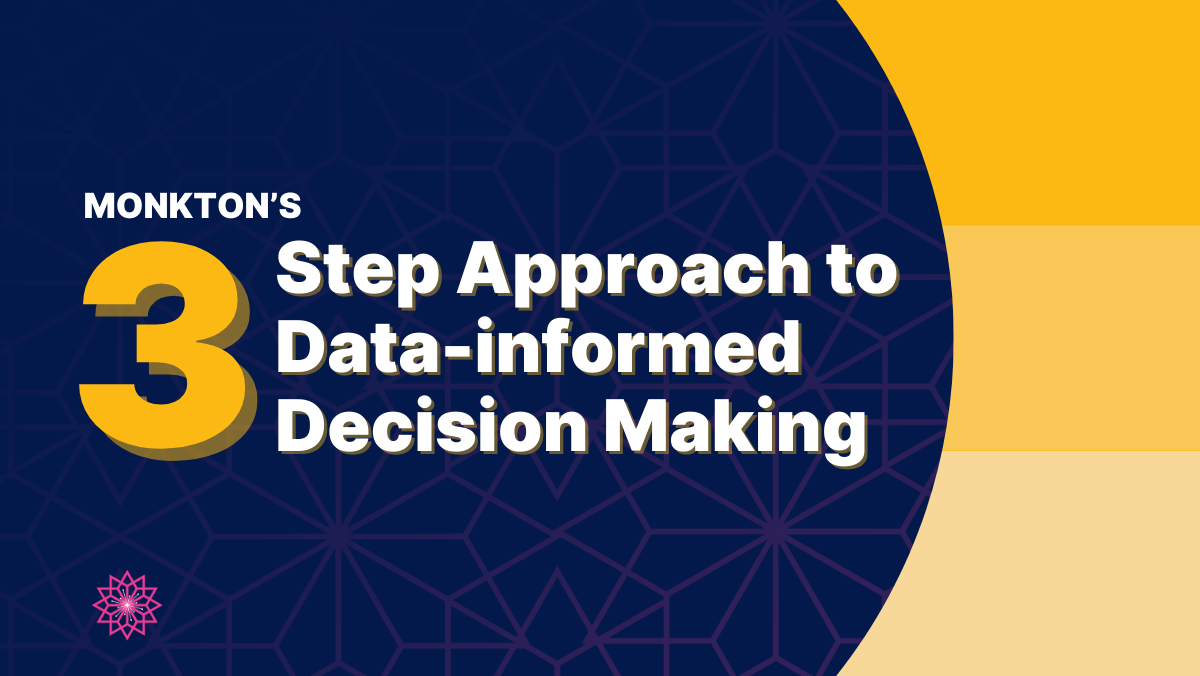Monkton’s 3-step Approach to Data-informed Decision Making
Every crucial decision a government agency makes can easily impact countless citizens, service members, businesses, vulnerable populations, and even future generations.
But what dives and informs these potentially life changing decisions?
Data.
Data is perhaps the most critical tool in making well-informed, strategic elections that positively impact citizens and contribute to operational efficiency and effectiveness.
No matter the mission or environment, government agencies rely on data to make informed, real-time choices. As such, identifying patterns, one-off scenarios, and evidence-based strategies isn’t just important—it’s mission critical.
But how can governments use raw data to make the right decision every time?
Follow these three steps:
Step 1: Establish A Strong Edge-Capable Foundation
Speed.
Versatility.
Efficiency.
This is what a Cloud Based Edge Capable (CBEC) architecture—an adaptive infrastructure that integrates Cloud Computing with Edge capabilities—offers. CBEC does this by processing raw data closer to the source, facilitating real-time analytics for immediate insights. CBEC architecture can also quickly analyze historical and current data, enabling predictive analysis that helps pinpoint potential trends.
When immediate decisions emerge that must be tackled quickly, do less to move faster. This can be accomplished through a CBEC, meaning organizations can roll out capabilities that run anywhere—most critically, within disconnected, on-the-Edge missions.
Monkton successfully moves faster by investing in Amazon Web Services GovCloud (“AWS GovCloud”) Platform as a Service (“PaaS”) and Functions as a Service (“FaaS”). Leveraging PaaS, we can define, in code, the infrastructure where the cloud-based solution lives. FaaS also allows us to simply hand AWS GovCloud compiled code, while Amazon seamlessly runs it for us.
Step 2: Adopt A “Code Is Code” Approach
A "code-is-code" approach is a philosophy that emphasizes the transferability and adaptability of code across various scenarios. It acknowledges no two missions are alike, and, therefore, software solutions should be designed to have alternatives that can be easily applied to different situations. A code-is-code approach within government agencies also ensures that developed code can be reused or modified for various missions, enhancing flexibility and efficiency in decision-making processes.
When it comes to Cloud Native services, Monkton leverages Docker, Kubernetes, and Amazon Elastic Container services to solve immediate needs. Proper architecture, built using PaaS and FaaS, allows these solutions to run seamlessly wherever the user may be—whether it’s the middle of the ocean or 10,000 feet in the air.
Step 3: Identify Problems Before They Occur
The best way to get ahead of problems is to make sure they don’t happen. In shifting environments with limited resources, maintaining robust operational capabilities is paramount.
Edge Computing, along with CBEC solutions, helps identify problems before they occur by proactively identifying potential issues when processing data at the Edge. The power of Edge Computing also means users are never relegated to a central cloud and can maintain operational efficiency securely. This makes computation, data storage, and faster, real-time responses possible—even in the most austere environments.
The best way to get ahead of problems is to make sure they don’t happen. In the case of shifting environments with limited resources, the power to maintain operational capabilities is paramount.





